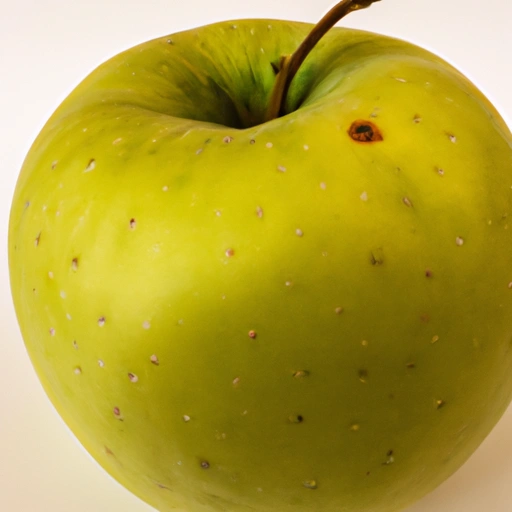Bramley Apple
Description

The Bramley apple is a variety of sour cooking apple that is particularly popular in British cuisine. Its name is derived from the village of Southwell in Nottinghamshire, England, where it was first cultivated. Bramley apples are large with a green skin, which sometimes has a hint of red. They are renowned for their sharp, tart flavor and have a higher acid content and lower sugar levels compared to other apples, which gives them a distinct taste that enhances many recipes.
Common uses
Bramley apples are primarily used for cooking and baking due to their unique properties, which render them fluffier and less firm than other apples when cooked. They are ideal for making apple sauce, pies, and crumbles, and are also used in savory dishes such as pork roasts and sauces.
Nutritional value
Calories
A Bramley apple contains approximately 48 calories per 100 grams (3.5 oz) of raw fruit.
Protein
Each 100 grams (3.5 oz) serving of Bramley apple provides roughly 0.4 grams of protein.
Fat
Bramley apples are very low in fat, with less than 0.1 grams per 100 grams (3.5 oz).
Carbohydrates
They are composed of about 12.6 grams of carbohydrates per 100 grams (3.5 oz), mainly from natural sugars and dietary fiber.
Vitamins
Bramley apples are a good source of Vitamin C and also contain some B vitamins.
Minerals
They contain essential minerals such as potassium and trace amounts of iron and calcium.
Health benefits
Due to their high fiber content, Bramley apples can contribute to digestive health. The presence of Vitamin C aids in immune system function, and the low-calorie count makes them ideal for weight management.
Potential risks
Consuming Bramley apples in moderation carries minimal risk; however, their high acidity can be problematic for those with acid reflux or sensitive stomachs. Additionally, apple seeds contain cyanide, so they should not be ingested.
Common recipes
Popular recipes using Bramley apples include classic British pies and tarts, apple sauce for roast meats, and fruit crumbles. They are also used in chutneys and preserves.
Cooking methods
Bramley apples can be baked, stewed, or cooked down into sauces. They retain their structure relatively well when cooked slowly but become fluffier and less firm than other apples when subjected to heat.
Pairing with other ingredients
Bramley apples pair nicely with spices such as cinnamon, nutmeg, and cloves, as well as with other fruits like blackberries and rhubarb. Their tartness complements rich meats like pork, adding a balancing flavor to hearty dishes.
Summary
In summary, the Bramley apple is a versatile and flavorful ingredient favored in many culinary applications for its tartness and fluffy texture when cooked. This fruit is not only packed with nutritional benefits but also has a rich cultural history and remains a beloved staple in food recipes around the world.